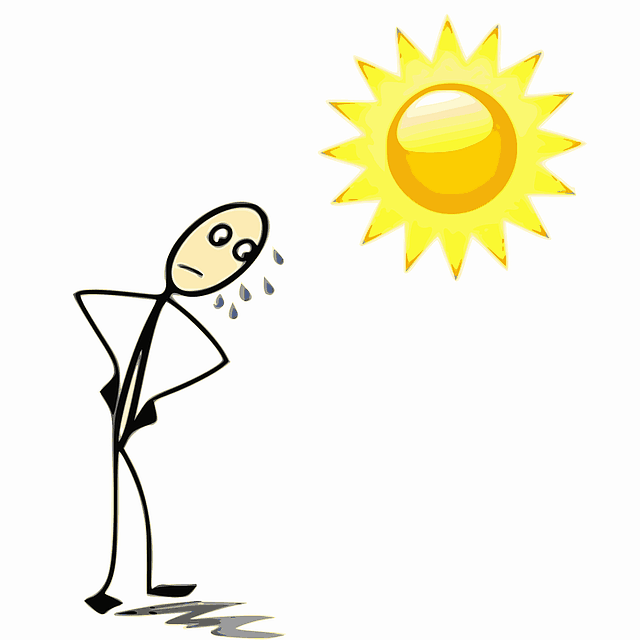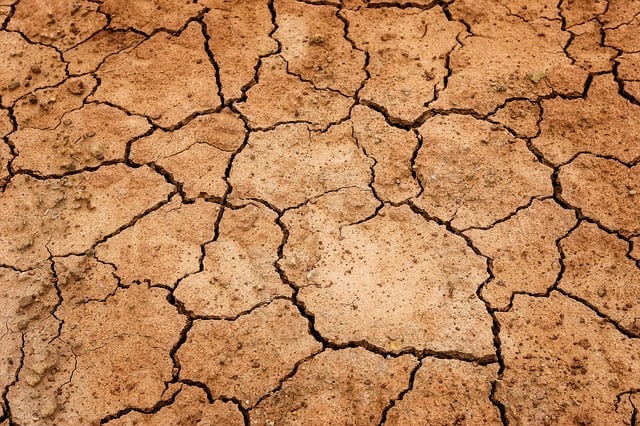It’s that time of year again. Nope, not Christmas. Not Halloween. Not Easter. We mean it’s time for your face to melt off because it’s so hot. That’s right y’all: it’s Late Summertime.

This means that it’s the time of year where the only time you’ll actually want to go outside is to swim, or hike 20,000 feet to a higher altitude. And that’s it, that’s the only time you’ll want to be outside. But that’s a good thing, because being outside in extreme heat for extended periods of time can cause serious health issues. Here are the 5 main dangers of excessive heat exposure, according the New York State Department of Health (NYSDOH), ranked from least serious to most serious.
1. Heat rash
You know the little red bumps you get after spending a lot of time outside, or wearing tight shorts at the beach for too long? That’s heat rash y’all. It’s defined as “a skin irritation that appears as a red cluster of pimples or small blisters.” Though it might look a bit weird and gross, the most you’ll feel is itchiness and mild discomfort in the rash area. It’s like a slightly more aggressive mosquito bite. If you have it, try to get to a cooler place, and keep the rash area dry. The NYSDOH also says that talcum powder may be used to soothe the rash a bit.
2. Heat Cramps

Heat cramps are strange pains you can get when exposed to heat for too long. The most common areas folks experience cramps are the abdominal region or extremities. Heat cramps also can also come with some side-effects: heavy sweating and mild nausea (*jazz hands*). To remedy heat cramps, move to a cool place and apply firm pressure to the cramping muscles. You can also try gently stretching the cramped muscle with 20 second holds, and then massaging it gently. Drinking cool water is also a good idea, as these cramps can be a sign of dehydration.
Speak of the devil…
3. Dehydration
Most people associate dehydration with sicknesses that cause vomiting and diarrhea, such as the flu or food poisoning. However, being exposed to heat for too long and not drinking enough water is also a surefire way to become dehydrated.

According to Johns Hopkins Medicine, dehydration has a variety of joyful symptoms (kidding, they’re rough):
- Thirst
- Less-frequent urination
- Dry skin
- Fatigue
- Light-headedness
- Dizziness
- Confusion
- Dry mouth and mucous membranes
- Increased heart rate and breathing
- Muscle Cramps
- It also sets the stage for heat exhaustion and heat stroke
As you can see, NONE of these are good. If you catch it early, moving to a cool place, drinking water and Gatorade (or any other drink with electrolytes), and eating some food should help. However, if you don’t catch it, and the dehydration continues for an extended period of time, it can quickly become serious and even deadly. That means you have to be really responsible about drinking your water to stay hydrated. Moderate to severe dehydration often requires hospitalization and IV fluids.
4. Heat Exhaustion
Heat exhaustion is the scary precursor to heat stroke. Like a reaux to a sauce if you will. Except this sauce is definitely not tasty. Some of the symptoms include (get your Notes app out): heavy sweating; fainting; vomiting; cold, pale and clammy skin; dizziness or headaches; nausea; and weakness. Wow, that’s a whole experience, and not a good one. To keep yourself from going into full Johnny Flame mode, move to a cool, dry place, loosen your clothing, and apply cool, wet cloths to your neck, face and arms. Johns Hopkins Medicine also recommends slowly sipping water, unless you start tossing your cookies.
5. HEAT STROKE (dun dun dun) (Also called sun stroke)
According to the CDC, “Heat stroke is the most serious heat-related disorder. It occurs when the body becomes unable to control its temperature. Body temperature rises rapidly, the sweating mechanism fails, and the body cannot cool down.” This is NOT GOOD. Johns Hopkins classifies it as an emergency that requires immediate medical attention. Some of the symptoms to watch for are: hot, dry and red skin; rapid pulse; a body temperature above 105 degrees F (that’s a straight up brain-frying fever for those of you who don’t know); loss of alertness; confusion; unconsciousness or coma; or rapid/shallow breathing. This isn’t like when you get flustered after your crush walks by. This is serious. If you notice any of these symptoms, immediately call 911. Seriously, when it comes to heat stroke, you need all the emergency folks you can get. While you wait for emergency personnel to get there, move the affected person to a cool location, place them in front of an air conditioner or fan, and apply wet sponges. You should also wrap ice packs around their neck, wrists, ankles or armpits to help bring their body temperature down.
Dang. Heat is some serious stuff, huh? We commend those who brave the outdoors, especially to those staying outside for long hours to do those lawn and landscaping chores, but when it’s three degrees away from Mordor hot, stay inside y’all. Let us take care of all the outdoor-sweaty-hot-stuff, and you can stay safely inside.

